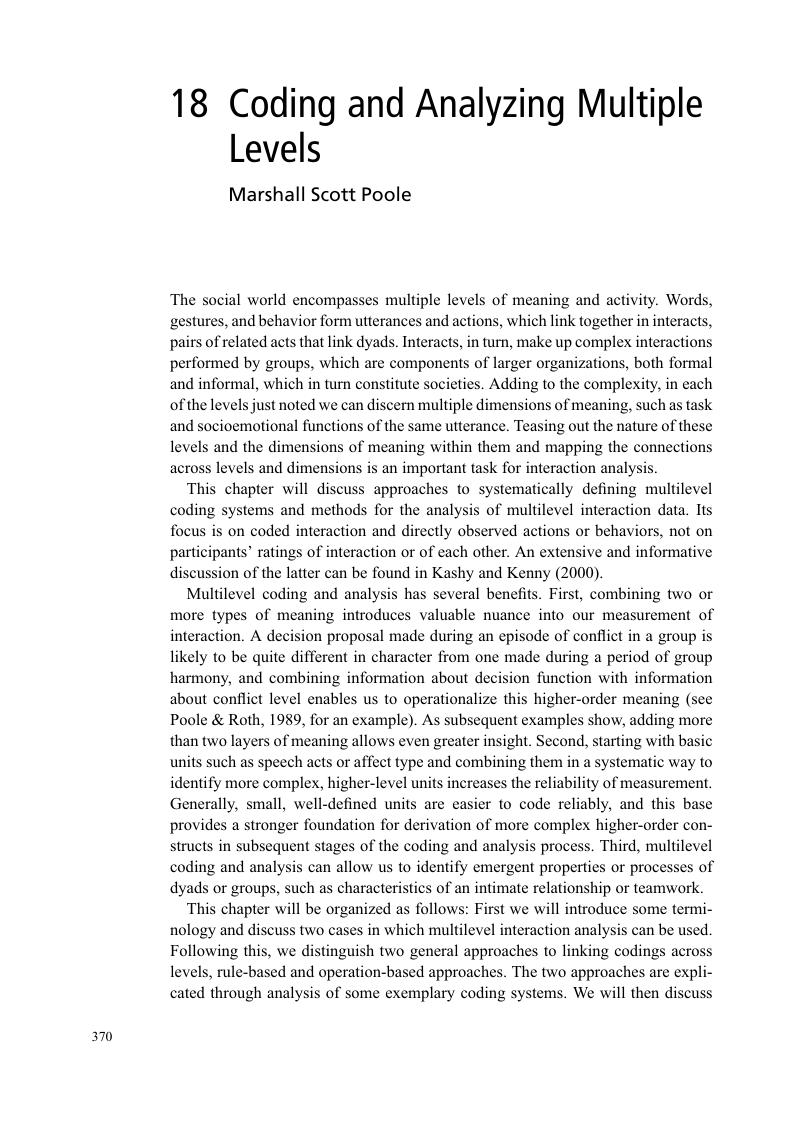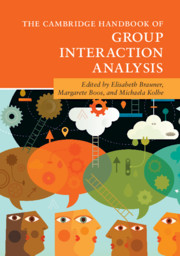Book contents
- The Cambridge Handbook of Group Interaction Analysis
- The Cambridge Handbook of Group Interaction Analysis
- Copyright page
- Dedication
- Contents
- Figures
- Tables
- Contributors
- Editors’ Preface
- Organization of This Handbook
- How to Work with This Handbook
- Part I Background and Theory
- Part II Application Areas of Interaction Analysis
- Part III Methodology and Procedures of Interaction Analysis
- Part IV Data Analysis and Data Presentation
- 14 Coding and Counting
- 15 Analysis of Interaction Sequences
- 16 Temporal Patterns in Interactions
- 17 Interdependence in Small Group Discussion
- 18 Coding and Analyzing Multiple Levels
- 19 Introduction to Machine Learning
- 20 TINT
- Part V Coding Schemes for Interaction Research
- Appendix
- Index
- References
18 - Coding and Analyzing Multiple Levels
from Part IV - Data Analysis and Data Presentation
Published online by Cambridge University Press: 19 July 2018
- The Cambridge Handbook of Group Interaction Analysis
- The Cambridge Handbook of Group Interaction Analysis
- Copyright page
- Dedication
- Contents
- Figures
- Tables
- Contributors
- Editors’ Preface
- Organization of This Handbook
- How to Work with This Handbook
- Part I Background and Theory
- Part II Application Areas of Interaction Analysis
- Part III Methodology and Procedures of Interaction Analysis
- Part IV Data Analysis and Data Presentation
- 14 Coding and Counting
- 15 Analysis of Interaction Sequences
- 16 Temporal Patterns in Interactions
- 17 Interdependence in Small Group Discussion
- 18 Coding and Analyzing Multiple Levels
- 19 Introduction to Machine Learning
- 20 TINT
- Part V Coding Schemes for Interaction Research
- Appendix
- Index
- References
Summary

- Type
- Chapter
- Information
- The Cambridge Handbook of Group Interaction Analysis , pp. 370 - 386Publisher: Cambridge University PressPrint publication year: 2018
References
- 1
- Cited by



